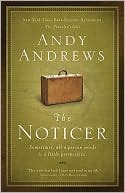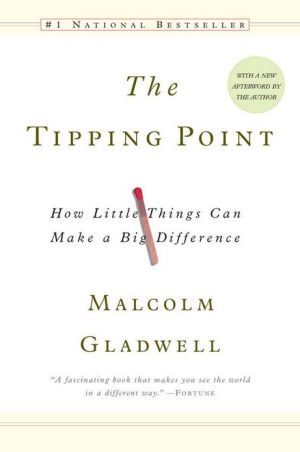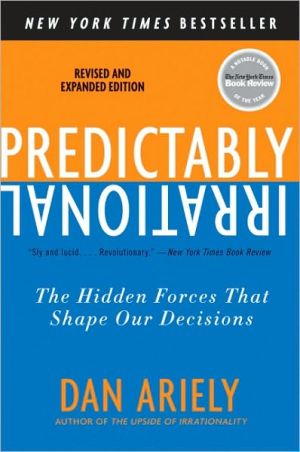How Math Explains the World: A Guide to the Power of Numbers, from Car Repair to Modern Physics
In How Math Explains the World, mathematician Stein reveals how seemingly arcane mathematical investigations and discoveries have led to bigger, more world-shaking insights into the nature of our world. In the four main sections of the book, Stein tells the stories of the mathematical thinkers who discerned some of the most fundamental aspects of our universe. From their successes and failures, delusions, and even duels, the trajectories of their innovations—and their impact on society—are...
Search in google:
In How Math Explains the World, mathematician Stein reveals how seemingly arcane mathematical investigations and discoveries have led to bigger, more world-shaking insights into the nature of our world. In the four main sections of the book, Stein tells the stories of the mathematical thinkers who discerned some of the most fundamental aspects of our universe. From their successes and failures, delusions, and even duels, the trajectories of their innovations—and their impact on society—are traced in this fascinating narrative. Quantum mechanics, space-time, chaos theory and the workings of complex systems, and the impossibility of a "perfect" democracy are all here. Stein's book is both mind-bending and practical, as he explains the best way for a salesman to plan a trip, examines why any thought you could have is imbedded in the number π , and—perhaps most importantly—answers one of the modern world's toughest questions: why the garage can never get your car repaired on time. Friendly, entertaining, and fun, How Math Explains the World is the first book by one of California's most popular math teachers, a veteran of both "math for poets" and Princeton's Institute for Advanced Studies. And it's perfect for any reader wanting to know how math makes both science and the world tick. Publishers Weekly Stein, a mathematics professor at California State University, explores the application of math to problem solving in the everyday, explaining tricky concepts and developing elegant algorithms for everything from scheduling auto repair to organizing a closet. He also demonstrates the power of the solution: "We advance, both as individuals and as a species, by solving problems. As a rule of thumb, the reward for solving problems increases with the difficulty." Stein blends math history and complex theories with jokes in a seamless manner while looking into everything from quantum mechanics to voting, while still realizing the limitations of his field-"without experiments and measurement these tools mathetmatics are essentially useless"-and its more whimsical possibilities: "We do not yet have the mathematical objects needed to discuss art, or beauty, or love; but that does not mean that they do not exist." Stein's work, mathematically rigorous but with minimal equations, will appeal to both casual and serious fans of math or physics, as well as those who take keen interest in problem solving. Copyright © Reed Business Information, a division of Reed Elsevier Inc. All rights reserved.
How Math Explains the World\ A Guide to the Power of Numbers, from Car Repair to Modern Physics \ Chapter One\ The Measure of All Things\ Missed It by That Much\ According to Plato, Protagoras was the first sophist, or teacher of virtue—a subject that greatly fascinated the Greek philosophers. His most famous saying was "Man is the measure of all things: of things which are, that they are, and of things which are not, that they are not."1 The second part of the sentence established Protagoras as the first relativist, but to me the first part of the sentence is the more interesting, because I think Protagoras missed it by just a single letter. Things have their measure—it is an intrinsic property of things. Man is not the measure of all things, but the measurer of all things.\ Measurement is one of man's greatest achievements. While language and tools may be the inventions that initially enabled civilization to exist, without measurement it could not have progressed very far. Measurement and counting, the obvious predecessors to measurement, were man's initial forays into mathematics and science. Today, Protagoras's statement still raises questions of profound interest: How do we measure things that are, and can we measure things that are not?\ What Is This Thing Called Three?\ Math teachers in college generally teach two different types of classes: classes in which relatively high-level material is taught to students who will use it in their careers, and classes in which relatively low-level material is taught to students who, given the choice of taking theclass or a root canal without anesthesia, might well opt for the latter. The second type of class includes the math courses required by the business school—most of the students in these classes believe they will someday be CEOs, and in the unlikely event they ever need a math question answered they will hire some nerd to do it. It also includes math for liberal arts students, many of whom believe that the primary use for numbers are labels—such as "I wear size 8 shoes"—and the world would function better if different labels, such as celebrities or cities, were used instead. After all, it might be easier to remember that you wear Elvis shoes or Denver shoes than to remember that you wear size 8 shoes. Don't laugh—Honda makes Accords and Civics, not Honda Model 1 and Honda Model 2.\ Fortunately (for at my school all teachers frequently teach lower-level courses), the second type of math class also includes my favorite group of students—the prospective elementary school teachers, who will take two semesters of math for elementary school teachers. I have the utmost respect for these students, who are planning on becoming teachers because they love children and want to make life better for them. They're certainly not in it for the money (there's not a whole lot of that), or for the freedom from aggravation (they frequently have to teach in unpleasant surroundings with inadequate equipment, indifferent administrators, hostile parents, and all sorts of critics from politicians to the media).\ Most of the students in math for elementary school teachers are apprehensive on the first day of class—math generally wasn't their best subject, and it's been a while since they've looked at it. I believe that students do better if they are in a comfortable frame of mind, so I usually start off with Einstein's famous quote, "Do not worry about your difficulties with mathematics; I assure you mine are far greater."2 I then proceed to tell them that I've been teaching and studying math for half a century, and they know just about as much about "three" as I do—because Ican't even tell them what "three" is.\ Sure, I can identify a whole bunch of "threes"—three oranges, three cookies, etc.—and I can perform a bunch of manipulations with "three" such as two plus three is five. I also tell them that one of the reasons that mathematics is so useful is because we can use the statement "two plus three is five" in many different situations, such as knowing we'll need $5 (or a credit card) when we purchase a muffin for $2 and a frappuccino for $3. Nonetheless, "three" is like pornography—we know it when we see it, but damned if we can come up with a great definition of it.\ More, Less, and the Same\ How do you teach a child what a tree is? You certainly wouldn't start with a biologist's definition of a tree—you'd simply take the child out to a park or a forest and start pointing out a bunch of trees (city dwellers can use books or computers for pictures of trees). Similarly with "three"—you show the child examples of threes, such as three cookies and three stars. In talking about trees, you would undoubtedly point out common aspects—trunks, branches, and leaves. When talking about threes to children, we make them do one-to-one matching. On one side of the page are three cookies; on the other side, three stars. The child draws lines connecting each cookie to a different star; after each cookie has been matched to different stars, there are no unmatched stars, so there are the same number of cookies as stars. If there were more stars than cookies, there would be unmatched stars. If there were fewer stars than cookies, you'd run out of stars before you matched up all the cookies.\ One-to-one matching also reveals a very important property of finite sets: no finite set can be matched one-to-one with a proper subset of itself (a proper subset consists of some, but not all, of the things in the original set). If you have seventeen cookies, you cannot match them one-to-one with any lesser number of cookies.\ The Set of Positive Integers\ The positive integers 1, 2, 3, . . . are the foundation of counting and arithmetic. Many children find counting an entertaining process in itself, and sooner or later stumble upon the following question: Is there a largest number? They can generally answer this for themselves—if there were a largest number of cookies, their mother could always bake another one. So there is no number (positive integer) that describes how many numbers (positive integers) there are. However, is it possible to come up with something that we can use to describe how many positive integers there are?\ How Math Explains the World\ A Guide to the Power of Numbers, from Car Repair to Modern Physics. Copyright © by James Stein. Reprinted by permission of HarperCollins Publishers, Inc. All rights reserved. Available now wherever books are sold.
Prologue: Why Your Car Never Seems to Be Ready When They Promised 1Sect. I Describing the Universe 111 The Measure of All Things 132 Reality Checks 293 All Things Great and Small 41Sect. II The Incomplete Toolbox 654 Impossible Constructions 675 The Hope Diamond of Mathematics 816 Never the Twain Shall Meet 1017 Even Logic Has Limits 1158 Space and Time: Is That All There Is? 133Sect. III Information: The Goldilocks Dilemma 1539 Murphy's Law 15510 The Disorganized Universe 16911 The Raw Materials 185Sect. IV The Unattainable Utopia 20312 Cracks in the Foundation 20513 The Smoke-Filled Rooms 22314 Through a Glass Darkly 237Index 249
\ From Barnes & NobleMathematics doesn't make the world go round, but it does the next-best thing: It gives us the power to understand nearly everything under (and beyond) the sun. James D. Stein's How Math Explains the World demonstrates how even arcane theoretical equations have led thinkers to radical insights about every aspect of our existence. Author Stein has world-class credentials (Yale, Berkeley, and Princeton's Institute of Advanced Studies are all on his resume), but he writes for bright general readers.\ \ \ \ \ Publishers WeeklyStein, a mathematics professor at California State University, explores the application of math to problem solving in the everyday, explaining tricky concepts and developing elegant algorithms for everything from scheduling auto repair to organizing a closet. He also demonstrates the power of the solution: "We advance, both as individuals and as a species, by solving problems. As a rule of thumb, the reward for solving problems increases with the difficulty." Stein blends math history and complex theories with jokes in a seamless manner while looking into everything from quantum mechanics to voting, while still realizing the limitations of his field-"without experiments and measurement these tools mathetmatics are essentially useless"-and its more whimsical possibilities: "We do not yet have the mathematical objects needed to discuss art, or beauty, or love; but that does not mean that they do not exist." Stein's work, mathematically rigorous but with minimal equations, will appeal to both casual and serious fans of math or physics, as well as those who take keen interest in problem solving. \ Copyright © Reed Business Information, a division of Reed Elsevier Inc. All rights reserved.\ \








